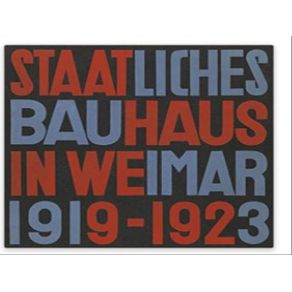In 1919, the state art school in Weimar was re-opened under the direction of Walter Gropius, with a radical new teaching approach and under the new name Bauhaus. Four years would go by until the first exhibition, which presented a novel approach to art to an enthusiastic public and spread the school s ideas throughout the world. The catalogue Staatliches Bauhaus in Weimar 1919 1923 was published in 1923 to accompany this first public showcase. This catalogue of its transdisciplinary oeuvre put the Bauhaus idea on paper for the first time and gave an idea of its potential. Featuring numerous projects, the catalogue also describes the theoretical doctrines of Paul Klee, Wassily Kandinsky, and Gertrud Grunow, and thus conveys the teaching methods applied in the various workshops. Gropius s preface explains the structure of the state-run Bauhaus and introduces its unique reform program, which called for and taught the unity of technology and art. Illustrations from the various workshops show projects by students whose connection with the Bauhaus is still largely unexplored today. With the original layout by László Moholy-Nagy and a cover designed by Herbert Bayer, the book represents an important testimony to the legendary avant-garde movement, shedding light on the work and aspirations of the Bauhaus from its earliest days. The commentary accompanying this facsimile edition places this momentous publication, long out of print, in a historical context, documenting the Bauhaus from initial idea to the standing it would attain as a pre-eminent

